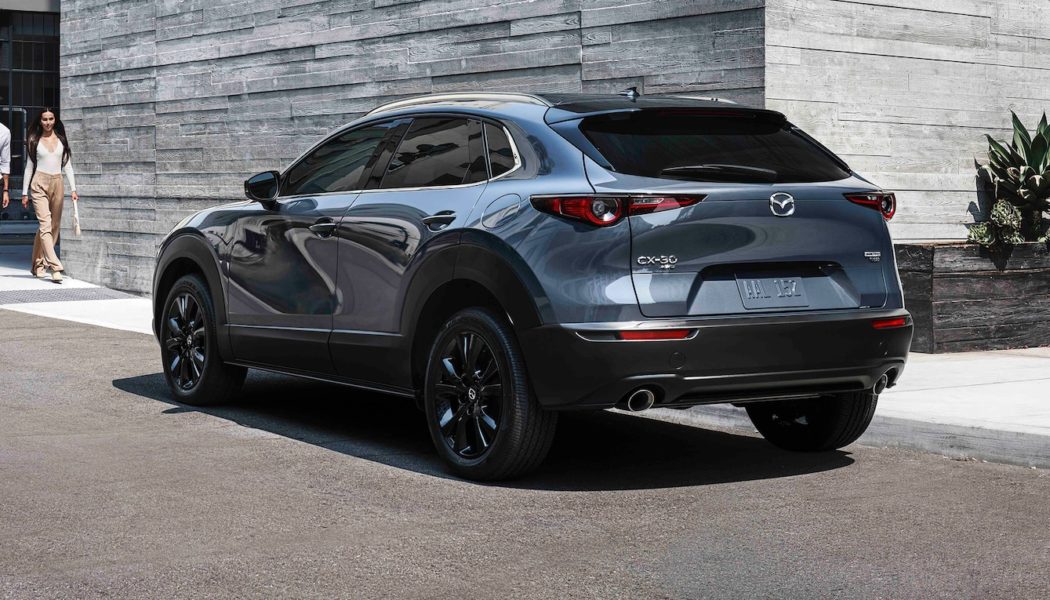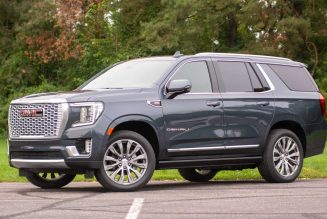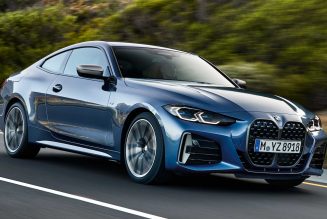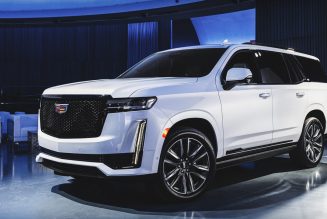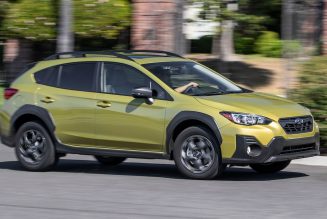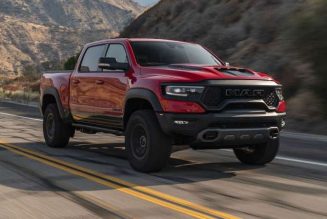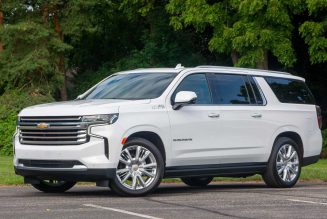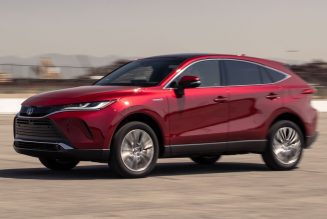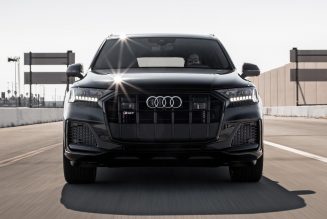We’ve called the Mazda CX-30 lots of nice things. Stylish. Upscale. Agile. But quick? Not quite. Over thousands of miles behind the wheel, the standard CX-30’s acceleration has left us wanting more. That changes for 2021, as a turbocharged engine is added to the options list. In our first drive of the 2021 CX-30 Turbo, we found it to make the small crossover feel much swifter. It packs a punch that’s missing from the naturally aspirated engine.
Now we’ve had a chance to track test the CX-30 Turbo and find out exactly how much swifter it is. The results confirm that it’s far quicker than the standard model when you stomp the go pedal. And on the road, forced induction alters the everyday experience. Yet we’re still not convinced the Turbo is worth it over the atmospheric engine. Why?
A Stylish Sleeper
No hood scoops or big spoilers here—this isn’t MazdaSpeed’s revival. Black wheels and side mirror caps, roof rails, slightly larger exhaust tips, and a tiny “Turbo” tailgate badge are subtle visual differentiators between the 2.5 Turbo and the standard CX-30. Those aren’t what draw your eye in. Rather, superb sculpting and crisp lines do. Exterior styling remains one of the CX-30’s best attributes, more elegant and mature than most other subcompact crossovers.
That sentiment continues in the cabin. Hard plastics are tactfully hidden while plush surfaces and substantial-feeling switchgear fall readily to hand. The front seats are excellent; padded to just-right firmness and ergonomically supportive. Yet the second row can’t be described as spacious. The high dashboard and shoulder line create an ambiance some will find intimate; others claustrophobic. Poor outside visibility results regardless. Mazda’s non-touchscreen, dial-controlled infotainment system takes some getting used to. A crossover the CX-30 may be, but cargo space is actually slightly less than in the Mazda3 Hatchback. Still, the overall appearance supports its premium ambitions.
How Much Power?
If the CX-30’s been on your radar, you may already know all that—so what’s up with the turbocharged engine? As standard, the CX-30 is equipped with a 2.5-liter I-4 that produces 186 hp and an equal amount of torque. It’s linked to a six-speed automatic transmission, with FWD standard and AWD optional. Despite earning the distinction of being the most powerful and torquey naturally aspirated engine in the subcompact crossover segment, it still feels a bit soft.
Enter the turbo. It’s piped to a version of that 2.5-liter I-4 and increases output significantly. With regular gas in the tank (as there was during our testing) it makes 227 hp and 310 lb-ft of torque. Filling it with 93 octane cranks output to 250 hp and 320 lb-ft. Besides standard AWD, a few hardware tweaks come with the turbocharged engine, like re-tuned suspension, altered transmission gear ratios, and a new rear differential. More than performance enhancement, however, Mazda says these changes keep the Turbo model’s driving experience consistent with the standard car—besides, of course, acceleration.
So Much Quicker!
In MotorTrend testing, the naturally aspirated CX-30 AWD has strolled to 60 mph in 8.0 seconds, give or take a few tenths. The Turbo? With a bit of pedal overlap to let boost build, it ran from 0-60 mph in 5.8 seconds. In the quarter mile, standard models have crossed the line in about 16.0 seconds, at never much above 88 mph. The CX-30 Turbo’s result is comparatively blistering: 14.3 seconds at 95.6 mph. A particularly telling measure is the cars’ 45-65 mph passing acceleration. Standard CX-30s took between 4.1 and 4.4 seconds, while the Turbo cut it down to 3.0 seconds flat.
That’s great when you’re flooring it, but in regular driving the oomph doesn’t necessarily make its presence known. Off the line there’s an extra degree of initial motivation. Then peak torque arrives at 2,000 rpm, just about when the efficiency-tuned transmission wants to upshift. In city driving it’s easy to forget that the turbo is there at all. Letting the tachometer swing as you merge onto the highway is when it’s most appreciable. Passing, too, is much easier, although not a smooth operation. There’s a beat before the transmission kicks down, which abruptly drops the engine into its powerband.
Sport mode changes the character—and not for the better. It makes the transmission hold gears for longer, which allows better access to the turbo and more eager, immediate power delivery. Yet it’s not smart about upshifting when it should; in Sport mode you’ll find yourself carrying a steady speed with the revs pointlessly pegged around 3,000 rpm. Although Sport mode makes the CX-30 Turbo feel quicker, it highlights how the car isn’t actually all that sporty.
Zoom, Singular
Sharp steering is a Mazda hallmark that the CX-30 Turbo maintains. Inputs to the nice leather-wrapped steering wheel result in precise responses. The wheels are easy to place accurately on the road—provided the road is smooth. Choppy or undulating pavement can overcome the firm suspension and unsettle the chassis. Regardless, as we’ve found road-tripping the 2020 CX-30 Premium AWD in our long-term test fleet, steering is overly sensitive in straight-ahead cruising.
Brake feel is good; slightly soft initially and firming up progressively. Yet for as reactive as the CX-30 Turbo feels, it doesn’t have the vim or mischievous attitude of a sporty car. Connected? Yes. Exciting? Not so much. And, as our test numbers prove, the Turbo model isn’t drastically different from the standard CX-30 in many dynamic measures.
On the skidpad, the CX-30 Turbo stuck to 0.82 g average, between the 0.79 and 0.83 g results posted by naturally aspirated CX-30 AWD models. In our figure eight test, the Turbo’s improved acceleration bore out a 27.6 second, 0.65 g average result, about a second quicker and at marginally higher g than its atmospheric counterparts. Braking from 60-0 mph took 119 feet, an identical figure to our best result from a standard CX-30 AWD. If you were hoping for an enthusiast-focused CX-30, the Turbo model isn’t it.
Is the CX-30 Turbo Worth It?
Starting at $31,225 in 2.5 Turbo trim, the CX-30’s turbocharged engine represents a $2,200 increase over a comparably-equipped naturally aspirated Preferred AWD model. Our test vehicle totaled $36,020 in range-topping Turbo Premium Plus trim with some options. That puts it in tricky territory. From the Mazda lot you could leave with a loaded, albeit slower, CX-30 Premium for thousands less. Or choose the more spacious and fun to drive CX-5 compact crossover packing the same turbocharged AWD powertrain and priced from $33,335 for the stylish Carbon Edition and $38,680 for the range-topping Signature trim with all the bells and whistles. Don’t decide on any well-equipped Mazda, however, without checking prices on compact crossovers from luxury brands. If you’re nevertheless set on a CX-30, is the Turbo model what to get?
We think not. With its atmospheric engine the CX-30 looks great, handles nicely, and presents an upscale interior. No, it’s not quick, but a big increase in engine output isn’t what it needs most. Refinement to the balance between ride and handling, or a smarter transmission with more gears, would elevate the CX-30 regardless of trim or what’s under the hood. The Turbo model’s much quicker acceleration only highlights those opportunities.
| SPECIFICATIONS | 2021 Mazda CX-30 AWD Turbo |
| BASE PRICE | $31,225 |
| PRICE AS TESTED | $36,020 |
| VEHICLE LAYOUT | Front-engine, AWD, 5-pass, 4-door SUV |
| ENGINE* | 2.5L/227-hp/310-lb-ft turbo DOHC 16-valve I-4 |
| TRANSMISSION | 6-speed automatic |
| CURB WEIGHT (F/R DIST) | 3,426 lb (61/39%) |
| WHEELBASE | 104.4 in |
| LENGTH x WIDTH x HEIGHT | 173.0 x 70.7 x 62.2 in |
| 0-60 MPH | 5.8 sec |
| QUARTER MILE | 14.3 sec @ 95.6 mph |
| BRAKING, 60-0 MPH | 119 ft |
| LATERAL ACCELERATION | 0.82 g (avg) |
| MT FIGURE EIGHT | 26.7 sec @ 0.65 g (avg) |
| EPA CITY/HWY/COMB FUEL ECON | 22/30/25 mpg |
| ENERGY CONS, CITY/HWY | 153/112 kWh/100 miles |
| CO2 EMISSIONS, COMB | 0.78 lb/mile |
| * Horsepower/torque values with regular-grade fuel. With premium: 250 hp/320 lb-ft | |
